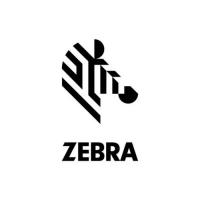Mobile Printer CPCLProgramming Manual P5-11
CODE 128/ UCC-128 SPECIFICATIONS
Ideal Ideal
Bar code Bar code Wide/Narrow Narrow Checksum
Symbology Type Input Length Characters Ratio Dot Width Calculation
Code 128 128 Variable Refer text 1.5:1 1 mod 103
/A/B/C/Auto
UCC-128Std. UCCEAN Refer text Refer text 3:1 3 mod 103
16
CODABAR
Codabar is ideal for applications that contain mostly
numeric symbols that may vary in length from bar code to
bar code. It can encode the digits from 0 to 9, the char-
acters “-”(dash), “$”(dollar sign), “:” (colon), “/” (forward
slash), “.” (period), and “+” (plus) as well as start/stop
characters A through D.
One optional checksum is automatically appended as
the least significant digit in the bar code data directly
before the stop character. The bar code symbology
specification contains all the information on calculating
the checksum. As a short example, our data will be
“A37859B” where A and B are start/stop characters. The
characters 0 through 9 are assigned the numerical values
0 through 9 respectively. “-” is 10, “$” is 11, “:”is 12, “/” is
13, “.” is 14, “+” is 15, and start/stop characters A B C and
D are 16, 17, 18, and 19 respectively.
Step 1: Add the numerical value of all the characters.
16 + 3 + 7 + 8 + 5 + 9 + 17 = 65.
Step 2: Divide this number by 16 and use the remain-
der, or modulo. In our example, this is 1
Step 3: Subtract the modulo from 16. This is the small-
est number that can be added to the sum in step 1 to
make a multiple of 16. (65 + 15 =80. 80 /16= 5)
Therefore, the check sum for our example is 15.
Step 4: The character that corresponds to 15 is “+” and
is added in before the stop character. Our final bar
code looks like “A37859+B”.

